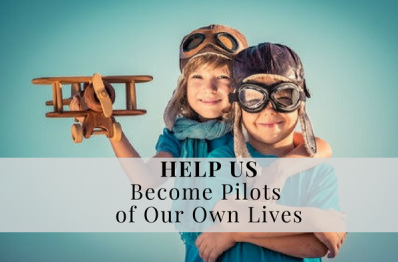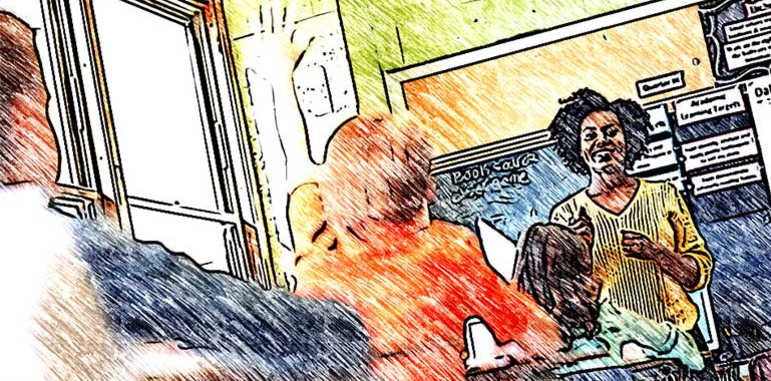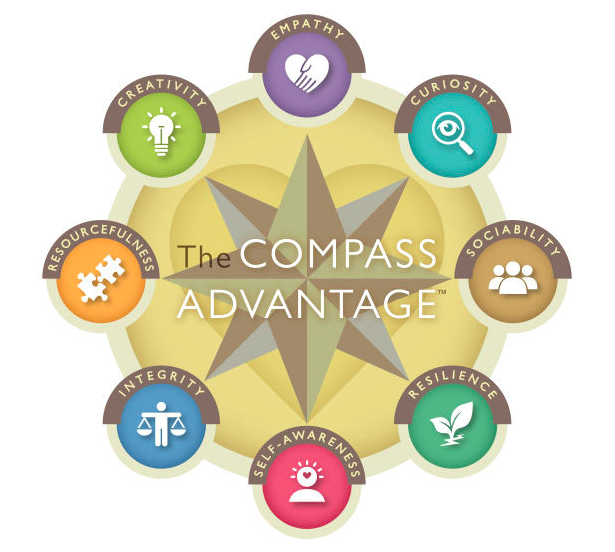ASW
|
 by Marilyn Price-Mitchell, PhD Successful kids get excellent grades, right? They play at least one sport very well. Successful kids do regular community service and, of course, take Advanced Placement courses. They attend the best colleges and attain great-paying jobs. Wait. If you’ve ever envisioned this fairy-tale definition of kids’ success, it’s time to look beyond external measurements to the internal abilities that help children and teens learn to successfully pilot their own healthy and productive lives — today and as future adults. Based on decades of research in child and adolescent development, neuroscience, education, and psychology, we know what drives successful kids. Successful kids are not driven by external accomplishments alone. In fact, they are inspired to perform to their highest potential when they are driven by their own internal compasses — a set of self-defining abilities that help them chart their own courses through life. How does this happen in today’s world, particularly when grades, test scores, and trophies often seem more important than the development of children who are ready to tackle career-life challenges ahead of them? In a nutshell, it happens when we understand how children and teens successfully mature to adulthood and how we impact their growth in key developmental areas. Relationships with parents, teachers, and other supportive adults determine how school-age children acquire their own personal guidance systems, full of interconnected abilities and pathways to success. When we envision those abilities as an internal compass, it is easy to see how parenting, education, mentoring, and child development go hand in hand — how children navigate successfully through school and life. The Compass Advantage: A Tool for Raising Genuinely Successful KidsI created The Compass Advantage framework as a visual, research-based, and engaging way for families, schools, and communities to apply the principles of positive youth development in the Digital Age. It’s a tool for understanding why successful kids need eight interconnected abilities and how those abilities are nurtured in different contexts like home, school, sports, hobbies, and out-of-school activities of all kinds. It’s also a call to act on behalf of children who deserve to live full and meaningful lives beyond external measures of success. This article is an overview of The Compass Advantage framework, the first in a series of nine articles about how parents can intentionally foster these internal abilities at home. If you are an educator, please see my article on how teachers nurture these eight core abilities in the classroom, published at Edutopia. Every month, a new article will take a deeper dive into one of the compass attributes. You’ll also notice as you take a closer look at this website, that most of my work in the field of child and adolescent development is focused around the eight abilities that are considered by many researchers to be hallmarks of truly successful kids. You will find lots of resources that use the compass framework, including “My Parenting Promise,” a free, frame-ready document that can be downloaded to remind you of the kind of family values and habits of thinking that nurture successful kids. The Compass Abilities: Here are the eight core abilities that all kids need to be healthy, productive, and successful in life. When we intentionally parent with these abilities in mind, our children and teens grow to become the pilots of their own lives rather than a life someone else charted for them. 1. Curiosity: The Heart of Lifelong Learning Curiosity is the ability to seek and acquire new knowledge, skills, and ways of understanding the world. It is at the heart of what motivates successful kids to learn and what keeps them learning throughout their lives. Curiosity facilitates engagement, critical thinking, and reasoning. We nurture children’s curiosity and other life-long learning skills when we encourage them to identify and seek answers to questions that pique their interests. When we help them recognize failure as an opportunity for exploration, we encourage experimentation and new discovery. We help them understand the tenets of engaged learning when we recognize the different ways they explore — by touching, tasting, climbing, smelling, etc. — and praise them for their perseverance to find answers. When we show them how parts connect and influence the whole of society, they discover that curiosity improves relationships, fuels innovation, and drives social change. See articles related to curiosity. 2. Sociability: The Core of Social Learning and Wellbeing Sociability is the joyful, cooperative ability to engage with others. It is derived from a collection of social-emotional skills that help successful kids understand and express feelings and behaviors in ways that facilitate positive relationships, including active listening, self-regulation, and effective communication. We impact children’s sociability when we help them understand that the words they choose make a difference to the relationships they create. When we teach them that every social interaction is tied to an emotional reaction, we help them avoid impulsive behavior and think through difficult situations before acting. We also build their capacity for collaborative teamwork. See articles related to sociability. 3. Resilience: The Capacity to Grow from AdversityResilience is the ability to meet and overcome challenges in ways that maintain or promote well-being. It incorporates attributes like grit, persistence, initiative, and determination. We build resilience when we push children gently to the edges of their intellectual, emotional, social, and physical comfort zones. When we support and encourage them as they take risks, overcome challenges, and grow from failure, successful kids learn to bounce back from life’s ups and downs. See articles related to resilience. 4. Self-Awareness: The Source of Meaning and PurposeSelf-awareness is the ability to examine and understand who we are relative to the world around us. It is developed through skills like self-reflection, meaning-making, and the process of honing core values and beliefs. It is situated at “true south” on the compass to symbolize that introspection is about looking southward, into ourselves. Self-awareness impacts the capacity for successful kids to see themselves as uniquely different from other people. We stimulate children’s self-awareness when we engage them in reflective conversations about values, beliefs, attitudes, and moral dilemmas. When we encourage them to understand and attend to their intellectual, emotional, social, and physical selves, we let them know we value their full human potential. See articles related to self-awareness. 5. Integrity: The Basis of Social Harmony and ActionIntegrity is the ability to act in ways consistent with the values, beliefs, and moral principles we claim to hold. It’s about courage, honesty, and respect in one’s daily interactions — doing the right thing, even when no one is watching. We shape a child’s integrity by treating them with respect and dignity, and listening to their feelings and concerns without judgment. When we praise children for demonstrating their values, beliefs, and principles through actions, we remind them of their value as ethical human beings, beyond a grade or test score. See articles related to integrity. 6. Resourcefulness: The Power to Shape the FutureResourcefulness is the ability possessed by successful kids to find and use available resources to achieve goals, problem-solve, and shape their futures. It draws on skills like planning, goal-setting, strategic thinking, and organizing. We encourage children to be resourceful when we set high expectations and support them to accomplish their goals. When we teach them to be strategic thinkers and adaptable problem-solvers, they learn to live without rigid rules or preconceived ideas. See articles related to resourcefulness. 7. Creativity: The Epicenter of Exploration and Discovery Creativity is the ability to generate and communicate original ideas and appreciate the nature of beauty. It fosters imagination, innovation, and a sense of aesthetics. We inspire creativity when we encourage young people to express themselves through writing, poetry, acting, photography, art, digital media, unstructured play, etc. When we notice and praise them for thinking outside the box and taking risks, children’s imaginations blossom. See articles related to creativity. 8. Empathy: The Root of Caring and Engaged CitizenshipEmpathy is the ability to recognize, feel, and respond to the needs and suffering of others. It facilitates the expression of caring, compassion, and kindness. It is situated at “true north” on the compass to symbolize the outward impact of raising young citizens committed to a just and sustainable world for everyone. We influence the ability of successful kids to care for others beyond themselves by creating meaningful relationships with them — by ensuring they are seen, felt, and understood regardless of how they learn or achieve at school. When we expose them to different worldviews, engage them in family community-service projects, and show them how to treat neighbors with kindness, we develop higher levels of empathy and compassion. See articles related to empathy. Through The Compass Advantage framework, parenting, education, and child development are viewed as integrated processes nurtured through the collaborative efforts of parents, teachers, and out-of-school programs. When we attend to the development of these eight abilities, the results are transformative for kids. Not only do children become lifelong learners, they become self-sufficient navigators of their own lives.
0 Comments
 DEVELOPING A SCHOOL CULTURE THAT PRIORITIZES THE SOCIAL-EMOTIONAL WELLBEING OF EVERY STUDENT (AND ADULT) BY LEAH SHAFER, ON MARCH 21, 2017 3:27 PM What are the social-emotional skills that can that work against the impulse to harass or exclude? What about the skills that build a predisposition toward empathy and compromise? Developmental psychologist Stephanie Jones, whose lab explores the impact of high-quality social-emotional interventions, helped us trace the connections between SEL and bullying prevention. Which social-emotional skills help children accept peers who are different from them? They need empathy and perspective-taking skills, but those begin with a basic understanding of the emotions of self and others. This basic understanding of their emotions will enable children to think about a situation from multiple sides and imagine what it’s like to be in someone else’s shoes. Which skills do children need to recognize and stand up to harassment or teasing? Children need several things: awareness, knowledge, and skills that enable them to recognize hurtful words and actions or to identify unfairness and conflict; and strategies that help them identify what they see and resolve arguments or discriminatory situations. Basic awareness and practice with conflict resolution strategies can help children know what to do when they see these situations. Schools can help develop both of these skills by creating a schoolwide culture that has clear norms and expectations. For example, a school should be very explicit and concrete about (1) what bullying behavior and discrimination looks like, (2) that it is not allowed in the building, and (3) what children should do when they see it. What are some classroom practices that can help build these skills? To build awareness of emotions: Have a “Feelings Tree” in the classroom (or in a more public place, such as the cafeteria or playground). Encourage kids to talk about the complex feelings that can arise during the day such as jealousy, frustration, anger, prejudice and injustice. To build empathy and perspective-taking: Engage in simple exercises like asking children what it might be like to stand in another person’s shoes. These questions can help them understand, appreciate, and respect the perspectives, beliefs, needs, wants, and feelings of other people. Encourage kids to be “feelings detectives” and try to figure out how a character in a book is feeling. To build conflict-resolution skills: Teach young children (as early as preschool) simple ways to share and take turns. These lessons help create a basic toolbox for responding to conflict in proactive and positive ways. Older children (first- to fourth-graders) can learn a larger set of conflict resolution strategies, such as how to compromise, how to decide when to walk away, and how to communicate through conflict. In our SECURe project, we teach elementary students a process called the Peace Path, which involves students telling each other how they feel, brainstorming solutions, and together choosing a strategy, trying it out, and reflecting on the outcome. Your research suggests that SEL must be a collective responsibility, shared by all the adults in the building and reinforced by schoolwide practice. Why? A basic principle of development is that in order to build or learn something, children need exposure to it. Children need exposure to people who represent different cultures, religions, ethnicities, abilities, sexual orientations, gender expressions, and other characteristics that can be the basis of discrimination. Schools have an important role in this — are we fostering exposure and relationship-building across divides in the classroom, hallways, and lunchrooms? In how discipline is enforced? In how students are grouped or "tracked" academically? Children also need exposure to methods of addressing conflict. If we want children to know how to treat all people fairly, we need to provide children with opportunities to interact and build relationships with all kinds of people. And we need to model this behavior ourselves as adults — early and frequently. This is especially critical in times that are characterized by open hatred, violence, and discrimination. Children are picking up the messages around them, so as educators, we need to be exposing children to productive forms of conflict resolution all the time. Can these skills and this school-wide approach help the students who are doing the harassing or bullying? We need to remember that acts of targeted bullying, discrimination, or harassment are often signs that the perpetrator feels unsafe or unaccepted in the community. For both the bully and the bully victim, an environment that prioritizes the safety and wellbeing of all students, that provides supportive routines and predictability, and that has clear expectations and norms around social behavior, is of utmost importance. This goes beyond teaching explicit skills and asks us to critically rethink the work of schools. There is an opportunity for schools to be not just places of math and literacy instruction, but places that provide the essential conditions for healthy development: safety, predictability, respect for all persons, and learning how to navigate complex social identities and relationships. This will require specific training and knowledge-building on the part of teachers and other school staff. A community where all students feel free from bias, discrimination, and harassment is a place where bullying is less likely to occur, where it will be handled in ways that seek to understand and address students' real needs, and where children's cognitive and psychological resources are freed up to focus on learning. Researchers Rebecca Bailey and Sophie Barnes also contributed to these responses. ADDITIONAL RESOURCES
|


 RSS Feed
RSS Feed
